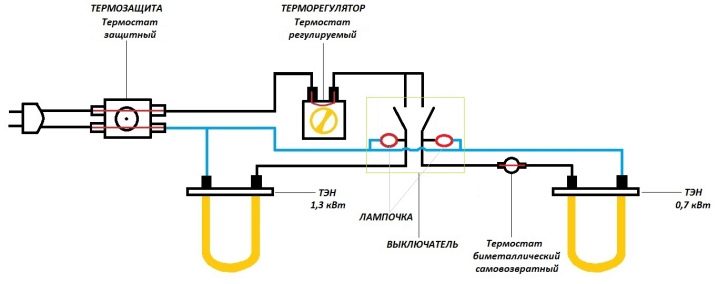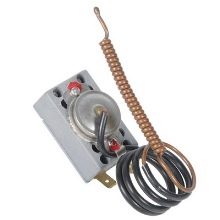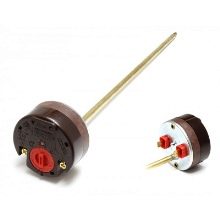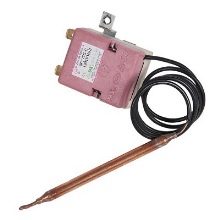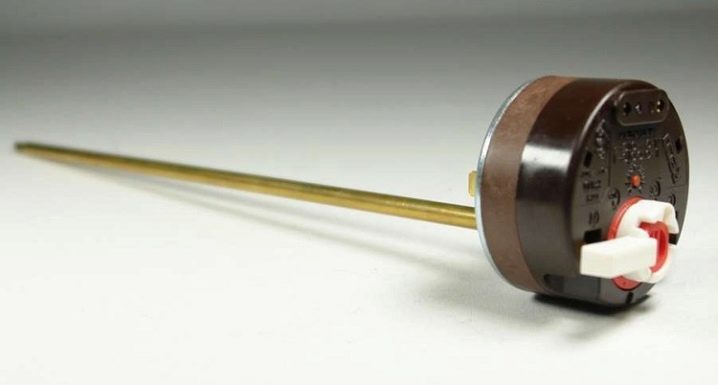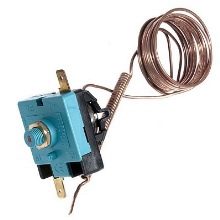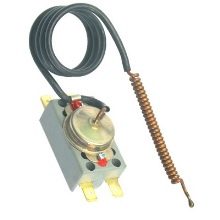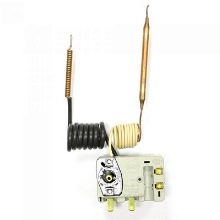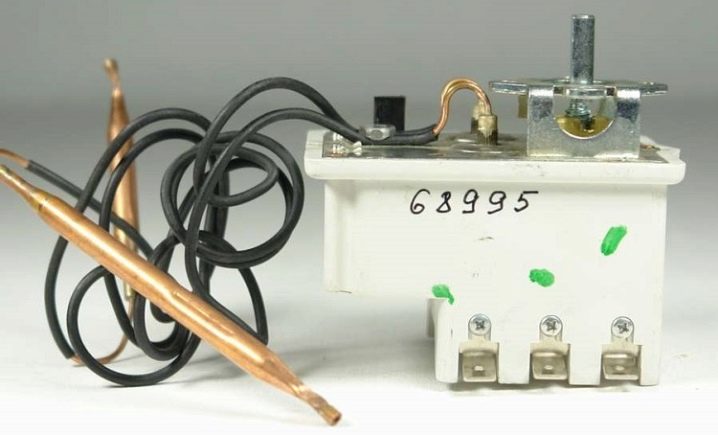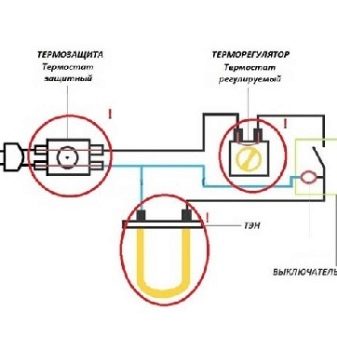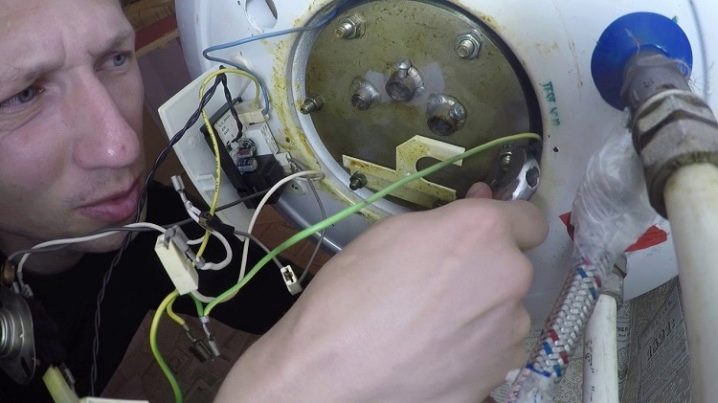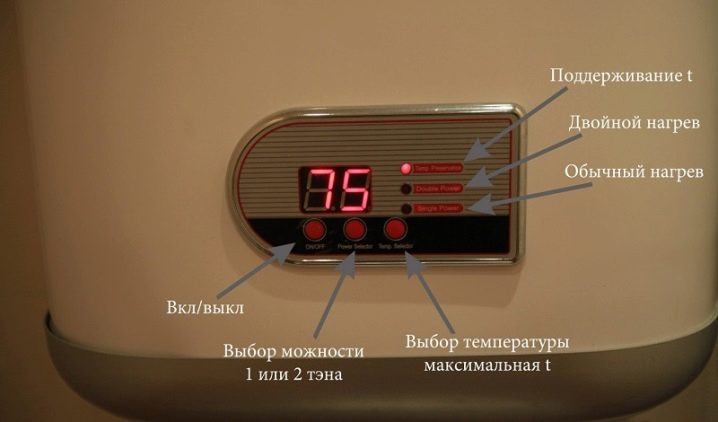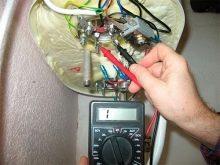How to choose and install a thermostat for a water heater?
The thermostat for the water heater is an important element of the boiler device. The main task of the device is to maintain the specified temperature of the heated fluid, and in some models it must be supported even in case of an emergency shutdown of the appliance in case of malfunctions. Recommendations regarding the selection and installation of such a device will be discussed in this article.
Special features
The thermostat is responsible for the safety of the heater and turns off the heating element in the case when the temperature has reached the set value. If the thermostat is for some reason missing or faulty, then an increase in temperature, and consequently of pressure inside the sealed enclosure, may cause an explosion. Therefore, the safety of others depends on the proper installation and operation of the thermostat. Modern models are equipped with a function of emergency shutdown of heating elements with a low level or the complete absence of water in the tank, which is very convenient in case of interruptions in water supply, poor pressure and frequent shutdowns.
The principle of operation of the thermostat is quite simple. It consists in opening the contacts of the heating element when the temperature reaches the set point and in their connection when the temperature of the liquid falls below the set value. Almost all models of thermostats are equipped with an indicator light, indicating the state of the device: a burning light indicates the operation of the heating element, and the extinguished indicates that the water has been heated to a predetermined temperature and the boiler can be used.
The desired temperature is set on a special electronic scoreboard or using a mechanical switch depending on the model, and can be changed at any time by the user.
More modern and high-tech devices in the event of a malfunction of the electric heating element will instantly turn it offfrom the network and will not allow electric shock while taking a shower with an ungrounded boiler. Also, some models of thermostats are able to perform their functions even with the failure of electronics.
In such cases, an emergency shutdown of the device occurs when the temperature reaches 95 degrees, and in boilers of the last generation - at 105 degrees.
Kinds
Modern boilers, as a rule, are already equipped with thermostats, among which are rod, electronic, bimetallic and capillary models.
The rod thermostat is the most common type of household thermostat and is presented in the form of a small tube, which expands linearly with increasing temperature and at the same time pressing a switch on the relay. The reverse process with the inclusion of TENs occurs when the water in the tank cools and its temperature drops below the specified values.
Among the advantages of this type of models, it is possible to note the low cost of devices, the disadvantages include some inaccuracy in the work associated with the proximity of the device to the cold water supply system, which is why the thermostat is often not completely correct.In view of the constant cooling, the device does not have time to react to the heating of the liquid in a timely manner and does not turn off the heating element. Therefore, the temperature of water from boilers equipped with rod thermostats often exceeds the specified values.
A capillary thermostat is the most modern model of a thermostat and is a tube inside which a capsule containing a contrast fluid is placed. As the temperature rises, water exerts pressure on the membrane, which, in turn, opens the contacts of the heating element. This type of thermostats is characterized by high accuracy and long service life. The tube containing the balloon is made of anti-corrosion alloys, and therefore the unit is not susceptible to rust and oxidation. The temperature error of capillary thermostats does not exceed 3 degrees.
The electronic thermostat is equipped with a protective relay that stops the operation of the TEN with an empty tank. The cost of such models is somewhat higher than the price of simpler analogues. Temperature regulators of this type are installed on boilers of world famous brands, and are distinguished by high accuracy, reliability and ease of use.High-tech models have the function of programming temperature and on-time.
Bimetallic. If in rod and capillary models the indicator of temperature change is the fluid in the sealed tube, in the thermostats of this type the metal plates play the role of the fluid. When the temperature regime changes, the plates change their location and open or close the electrical circuit.
According to their purpose, thermostats are divided into adjustable, protective and adjustable-protective. The first maintain the temperature of the heated fluid in a certain range and operate in automatic mode. Reaching the upper limit of the set value, the relay opens the contacts and the water is stopped. Upon reaching the lower limit of the specified temperature, the relay closes the circuit, and the work of the ceramic or steel heating elements is resumed.
Protective thermostats are designed to forcibly turn off the heating element after reaching the specified heating parameters.Turn on the heater after such a shutdown can only be manually. Typically, these thermostats put as a second additional device designed to turn off the heating element in case of failure of the main thermostat. The temperature in protective devices is set at around 95 degrees, which prevents boiling water and a possible explosion of the boiler. The third type - adjustable protective - is a device that combines the properties of the first and second types, and is considered the most versatile device.
According to the method of mounting thermostats for water heaters can be divided into mortise and overhead model. The first are used with mechanical control, the second - with electronic.
Installation
Sometimes there are such situations in which the heating element of the water heater is functioning properly, and the thermostat for some reason has already failed - does not turn off or does not work correctly. In this case, the purchase of a new water heater can be postponed and limited to self-replacement of the thermostat. To do this, take the technical passport of the boiler and select the appropriate model based on its performance properties and technical characteristics.
For a more accurate choice, you should rewrite all the data from the marking of the old device, and on the basis of the data sheet and these data you can purchase a new thermostat.
The wiring diagram and adjustment rules are usually written in the accompanying documentation, so before starting the self-installation, it is recommended that you carefully read the instructions.
Installing a thermostat with your own hands requires certain skills and knowledge in the field of electrical work. It is very important to comply with safety regulations, without the knowledge of which work can not begin. Replacing the thermostat should be carried out only on a model with a similar technical characteristics, the use of a home-made device for installation in a factory-made boiler is not allowed.
At the first stage, the water heater should be de-energized and the water supply from the water supply system should be stopped. Then it is necessary to drain the existing liquid and remove the bottom panel of the device, thus opening access to the heating element. After opening the lid, you need to remove the pressure ring and remove the old thermostat together with the regulating unit.
Next, you should install and connect a new thermostat, put the pressure ring in place and fix the bottom panel. After the installation is completed, it is necessary to fill the tank of the water heater with water, turn on the heating element and check the operation of the new device, putting it at the minimum temperature value.
If the thermostat has disconnected the heating element after the water has reached the desired temperature, the installation was performed correctly, and the thermostat is operating in operating mode. At the last stage, the thermostat should be adjusted by setting the necessary operating parameters.
Tips
In order to notice the failures of the device in time and take measures to eliminate them, you should know the main causes of failures and their signs. The most common problems of thermostats include:
- wear copper capillary tube;
- poor interaction of the three-contact thermostat and the heating element;
- failure to adjust and the formation of scale on the heating elements;
- failure due to power surges.
Symptoms of a thermostat malfunction:
- the water in the boiler does not heat up;
- the display shows incorrect temperature values that differ from the actual indicators of water heating;
- the thermostat does not turn off the heating element at a given temperature, as a result of which uncontrolled water heating occurs, which can be stopped only by disconnecting the boiler from the network;
- indicator light on mechanical models is off.
Immediately after problems with the operation of the device have been noticed, it is recommended to make diagnostics and determine the possibility of further operation of the thermostat. To do this, remove the thermostat from the boiler, set it to the maximum temperature mode and measure the resistance of the contacts at the inlet and outlet. The lack of response of the device indicates a malfunction and the need to replace the thermostat.
If there was a reaction, the device should be set to the minimum temperature level and re-measured. Then you should light the candle and heat the thermostat tube over the flame. If the device is intact, after a few minutes the relay will work, and an automatic opening of the circuit will occur.
The value of resistance in this case should strive upwards. If this does not happen, the thermostat should be replaced with a new one.
The thermostat is the main regulating element of the boiler.Not only the uninterrupted functioning of the water heater, but also comfortable use and safe operation of the device depend on its correct operation.
You can learn more about how to repair the thermostat on the water heater.



